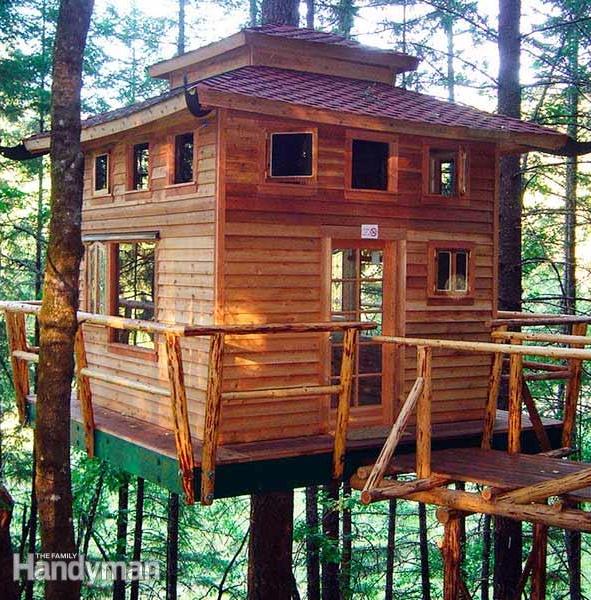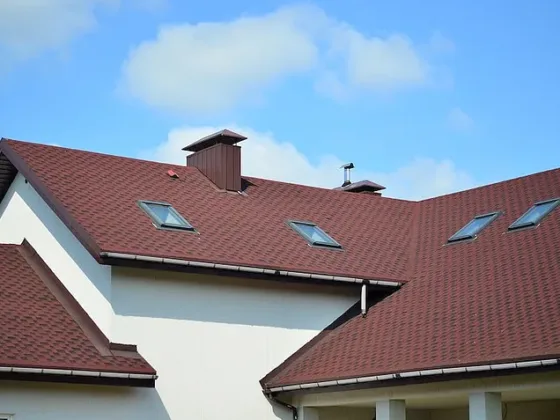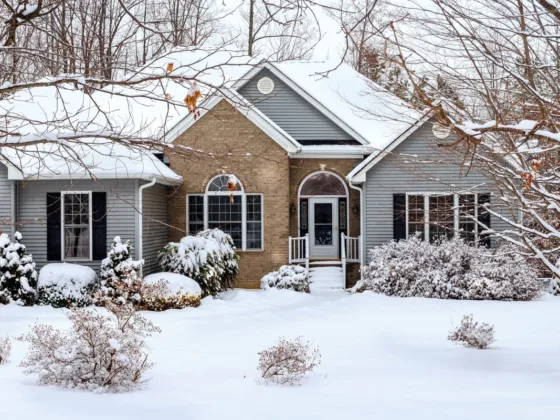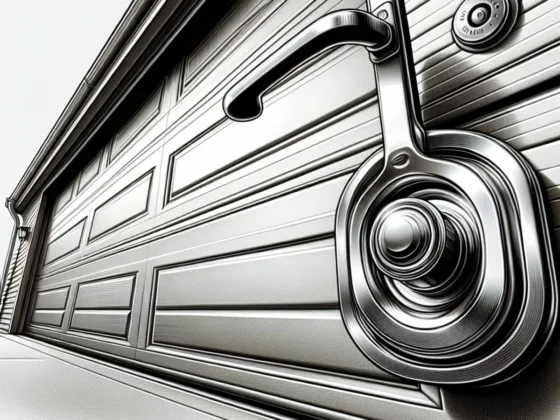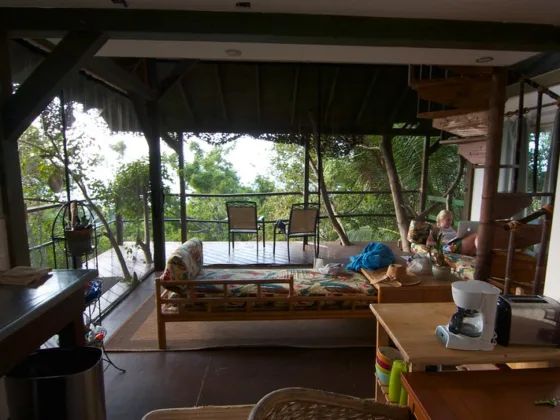Have a look at four different ways on how to build a treehouse from the perspective of someone who built one that lasted more than 20 years.
Keeping it simple can make the DIY treehouse easy to build and it won’t break your wallet either.
Includes ways to minimize damage. The final two easy tree houses don’t need big branches or two trees and one you build right around the truck of a single tree.
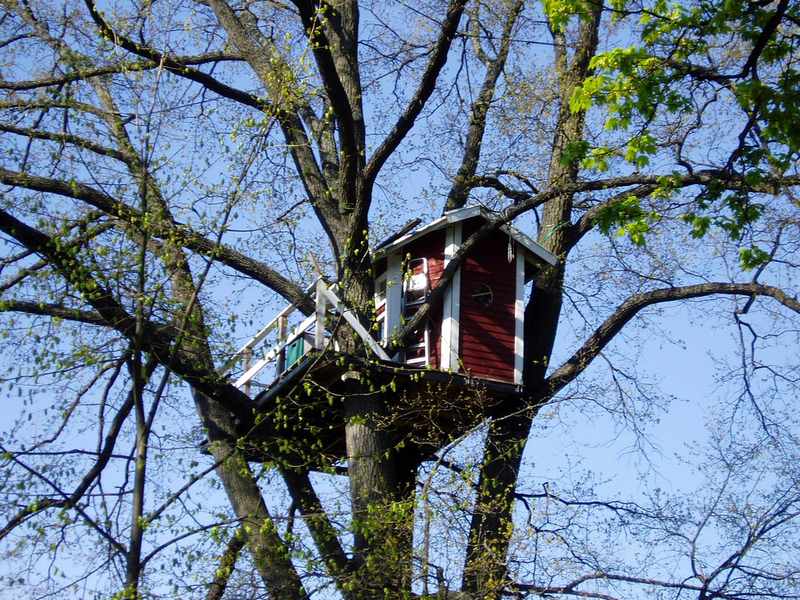
How to Build a Treehouse (DIY Treehouse)
Read about four easy to build a DIY treehouse for your kids. A tree house is a special place and building one with your kids is an experience you won’t forget.
They are so much fun and will last for years if they are made right. Just make sure you give the kids some time up there too.
Read Also:
The Tree House
The Tree House was started in 1970. Using some “borrowed” lumber salvaged during a remodeling project, the first platform was built in a 113-year-old elm tree seven feet off the ground.
A rope for a tire swing was placed over a branch at the heart-pounding height of 30 feet, put there by an 11-year-old kid who was sure he was going to fall.
Over the next few years, the tree house grew. First sides were added, then a roof into which a trapdoor was cut. More sides and another roof made it bigger and better.
Another trap door was added and railings turned the roof into a lookout tower platform.
Eventually, the lookout tower gained its roof and the bottom half of the sides were closed in. Standing on the top floor, you looked down on the peaks of single-story houses.
That tree house became “the” goto place for fun in the neighborhood and at times more than 10 kids were up there.
Along came Dutch Elm Disease and trees died all over the neighborhood–but not the tree house tree.
Over the years, the tree grew around the boards that framed the platforms, completely encompassing the lumber.
Sadly, by 1988 the tree house was showing its age and was no longer safe. I climbed up one last time and cut it down piece by piece.
As if it no longer had a reason for living, the tree died suddenly four years later and was cut down the following winter.
There were 135 rings on the stump, one for each year the tree had lived.
DIY Treehouse Considerations
Use pressure-treated lumber for all framing materials. Enclose platforms with sides a minimum of 36 inches high.
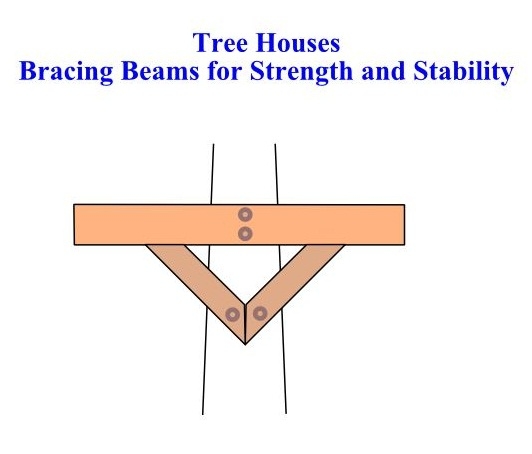
Pick good trees. Never use a branch less than 8-inches in diameter and don’t use branches that sway a lot in the wind.
Branches that extend straight out from the trunk are weak. Use branches that angle up at a 45-degree angle or less.
Attach framing to the tree using galvanized or coated 1/2-inch thick threaded rods, carriage bolts, or lag bolts that will extend at least 8-inches into the middle of the branch. Use joist hangers for joists and rafters.
Make ladders out of 2-by-6 lumber and add hand railings for a good grip on both sides. Attach the ladder to the DIY treehouse and the ground below so it can’t be moved.
Unless you’re willing to build regular stairs, make access to the treehouse through a trapdoor that won’t open past 90 degrees. The kids will go in the trapdoor which will then close by itself.
There’s no need to be up 30 feet. Put the platform six to ten feet off the ground, but not much higher.
A Simple Platform: How to Build a Treehouse
Start with a tree that has three or four branches that divide the trunk at a central crotch. Attach 2-by-6 lumber in a rough square using lag bolts.
If spans will be longer than 6 feet, use 2-by-8 lumber. Add joists between the frame about every 16 inches and cover the frame with 3/4-inch plywood.
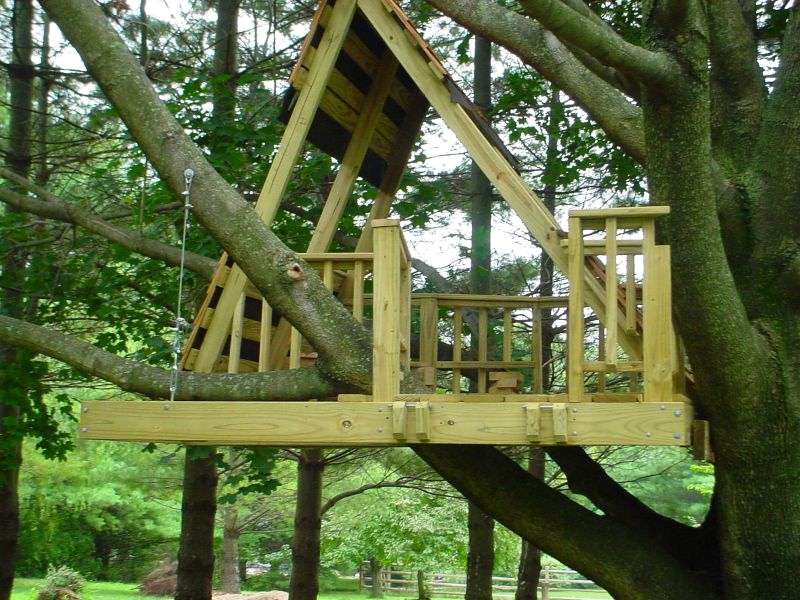
Add 2-by-4 rails no less than 3-feet above the platform with vertical 2-by-4s every 2 feet.
Enclose the sides with 1/2-inch plywood. Add another frame above the platform for a roof or a lookout tower.
A roof should have a slope to help it shed water. If you make the second story a lookout, add more rails with enclosed sides.
A Tree House Between Two Trees (DIY Treehouse)
This easy how to build a treehouse uses two trees to make the platform. It’s a good way to build a DIY treehouse if you don’t have a big tree with big branches to support the platform.
You should choose trees with a minimum 10-inch diameter at the platform height.
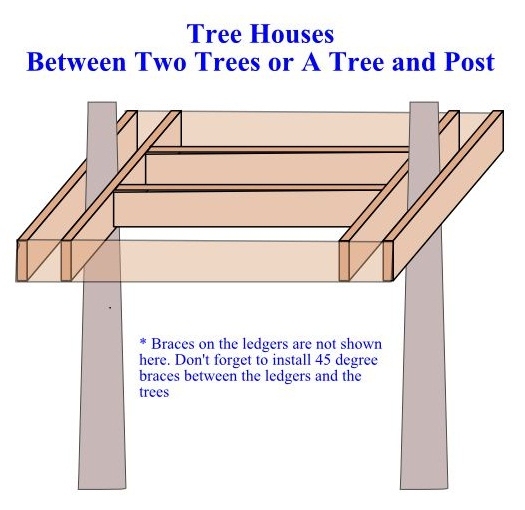
Start with two, 2-by-8 ledger boards on each tree and bolt them to the tree using long carriage bolts. Spans greater than 10 feet require additional bracing.
Drill holes through the board, into the trunk and out the board on another side. Attach the ledgers using 1/2-inch galvanized carriage bolts with nuts and washers. Brace the ledgers on each end with 2-by-6 lumber.
Add 2-by-8 joists between the ledgers every 16 inches. Cover the platform with deck boards or 3/4-inch plywood.
Option – Use a doubled 2-by-8 beam between the ledgers to hang swings from.
A Tree and a Post
You can still build a DIY treehouse if you’ve only got one tree and it doesn’t have good branches at a reasonable height. Ten feet from the trunk, auger a 12-inch hole in the ground six feet deep.
Stand a 24 foot 8-by-8 pressure treated post up in the hole, level it and temporarily brace it.
Dump two bags of quick-set concrete in the hole and add the water. Mix it up with a long stick. Dump in two more bags of concrete, add more water and mix again.
Give it an hour to set up, then fill the hole in with dirt. Build your DIY treehouse the same way as building a treehouse between two trees.
A Tree House Around the Trunk
You’ve got a good tree with a great crown and lots of shade, but the branches are too high up.
And the idea of digging a hole and putting in a post doesn’t appeal to you. That’s one way of doing it, but here’s another way.

Start by putting up two 8-foot long ledger boards on either side of the tree. Be sure the tree is at least 12 inches in diameter.
These two boards will serve as a support beam for the rest of the structure. Add a 2-by-8 frame that sits on the ledger boards and braces the frame at each corner using 2-by-6 lumber.
Add joists on 16-inch centers and build the floor with deck boards or 3/4-inch plywood. Rails, sides, and a roof complete the treehouse.
Minimizing Tree Damage for DIY Treehouse
Build the DIY treehouse in mid-summer. The heavy spring flow of sap will have slowed greatly, but the tree will still have time to heal before winter.
If you bore a hole and it turns out to be in the wrong place, fill the hole with exterior latex caulk to keep insects out.
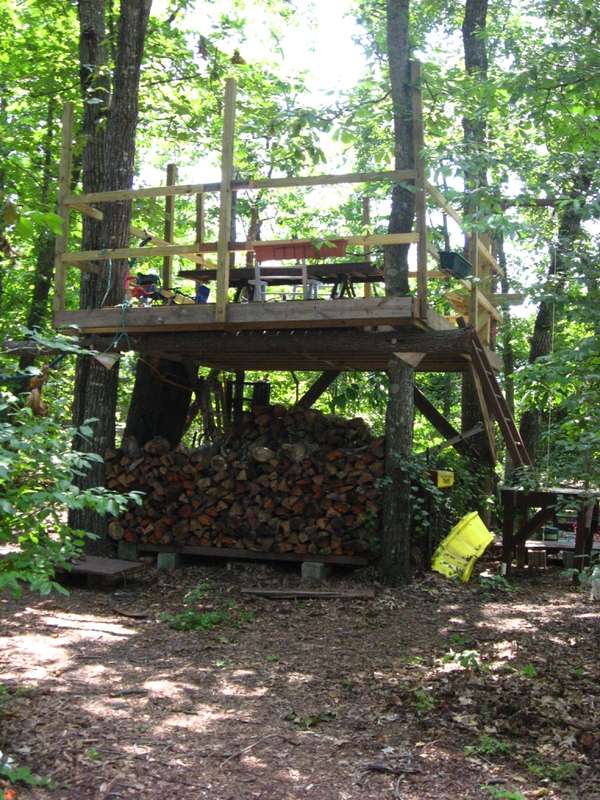
Bore as few holes as possible. Start with a minimal but sturdy frame that attaches to the tree, then build off of that. Attach the treehouse to the tree for stability as necessary, but don’t overdo it.
Don’t cut away the bark. The tree will grow around the wood, making it a part of the tree and adding strength to the structure.
A rope over a branch is a great way to make a swing of just about any kind. Cut a piece of a tire and nail over the branch, then attach the rope. That way the rope rubs the tire, not the branch.
Tree Houses
Treehouses have special magic you just can’t get from a manufactured play-set.
And the kids won’t care how much you spend on that expensive playset. If you’ve got the trees, a little bit of time, and some spare elbow grease, make an easy “how to build a treehouse” with your kids.
You’ll be surprised how much fun you have building it and every moment the kids spend in it will make it all worthwhile.
Credits and Resources
- Tree lightning – How to Wrap Trees With Outdoor Lights
- Red Treehouse Photo by Udo Schröter at Flickr.com
- A-Frame Tree House Photo by Guy Schmidt at https://www.flickr.com/photos/shortfatkid/751697136
- Platform Tree House Photo by M. Litty at Flickr.com
- The DIY treehouse described at the beginning of this article was built by the author.
30+ Free DIY Treehouse Ideas & Plans | Start Building Today!
1. Wellness Mama Treehouse for Fun & Exercise
The homemade DIY treehouse that is great for exercise and creative play in kids with a climbing wall, monkey bars, a slide, a rope slackline, and zip line.

2. DIY Tree House with a Slide and Swing-Set
Table of contents
- Introduction and plans for DIY tree house platform with a slide and an attached swingset
- Platform frame.
- The deck frame for how to make a tree house platform with a slide and an attached swingset.
- Deck boards and slide.
- The steps for how to build a DIY tree house with a slide and an attached swingset.
- Stairs installed.
- Tree platform handrail.
- Swing-set for a treehouse.
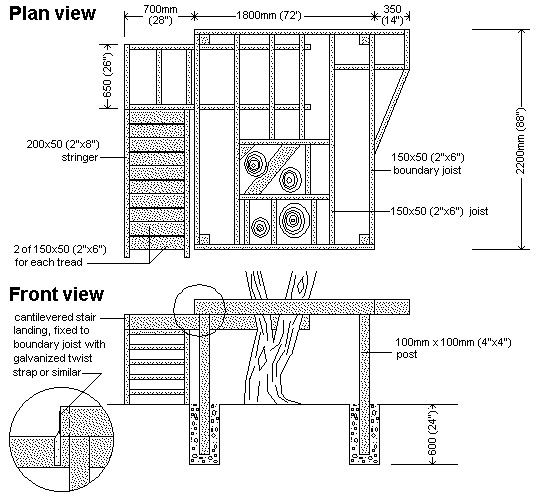
3. Uncovered DIY Tree House or Tree Fort
How to make a tree house with 2-by-8 and 4-by-4 posts that will last a lifetime
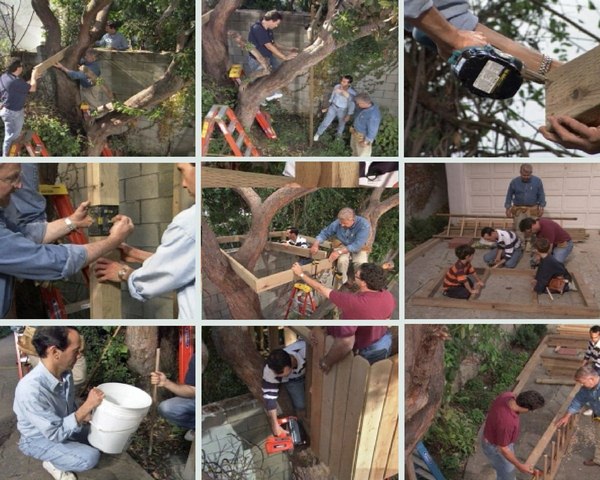
4. The Drawing Tree-less Tree House
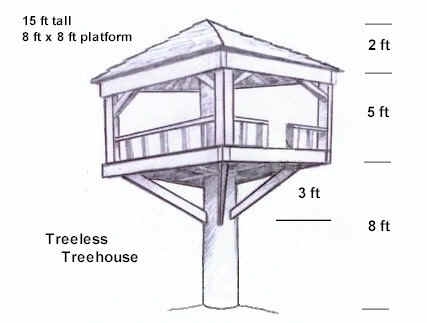
5. The Unique Mother Earth Tree House
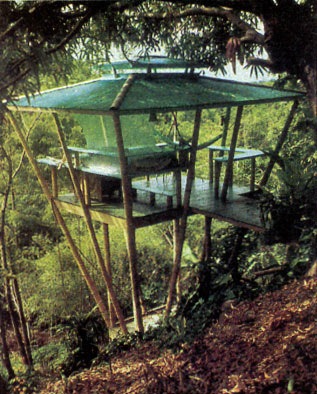
6. DIY Hanging Treehouse
The easy-to-follow instructions on how to make a kids’ playhouse that is suspended from a tree.
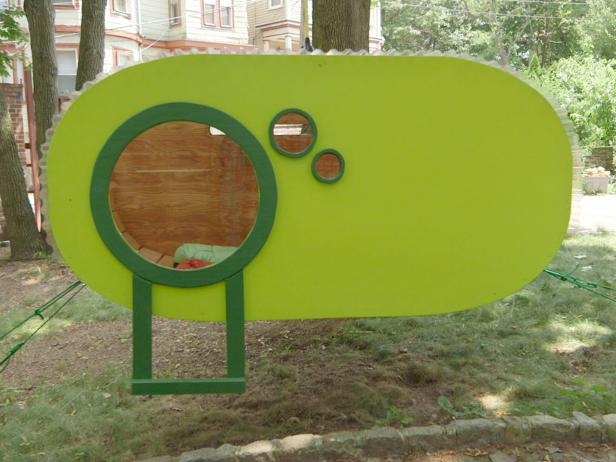
7. DIY Cabin Style Tree House
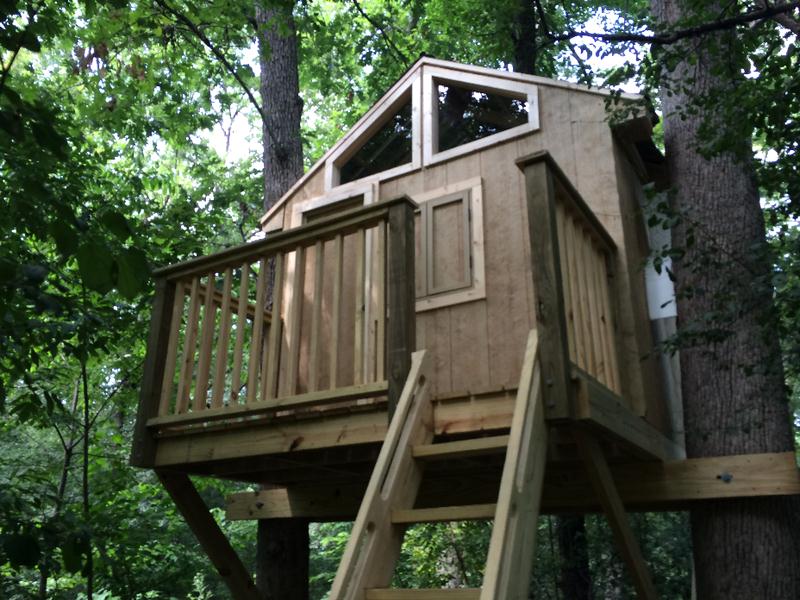
8. The Classic Made with HAPPY Treehouse
Sharing how to make a treehouse by breaking down the different sections including base & frame, floor, walls & window, and roof.
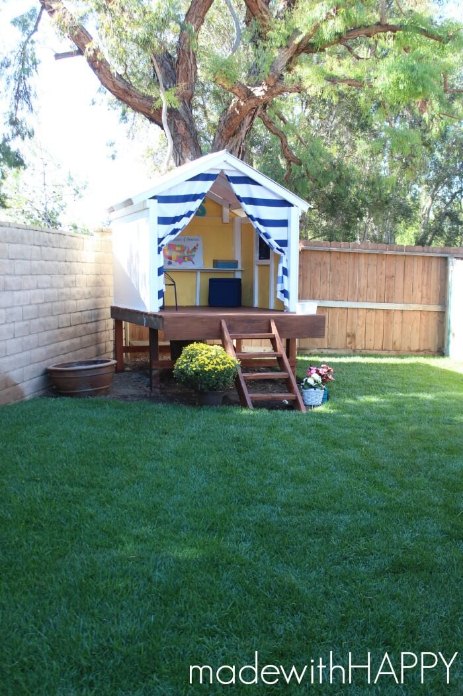
9. DIY Easy Outdoor Tree House by Yea Dads Home
Building the Outdoor Treehouse:
- Day 1 – Leveling Blocks For the Treehouse Feet.
- Day 2 – Marking Cuts for Treehouse Legs, Measuring Edge of Treehouse Platform, Treehouse Joists, Assembling Treehouse Legs, Tightening The Bolts.
- Day 3 – Setting the Treehouse Legs in Place, Joist Layout, Support for Hanging the Joists, Treehouse Platform in Place.
- Day 4 – Aligning the Side Supports, Treehouse Railing Notches, Inside Railings for Treehouse, Treehouse Top Railing.
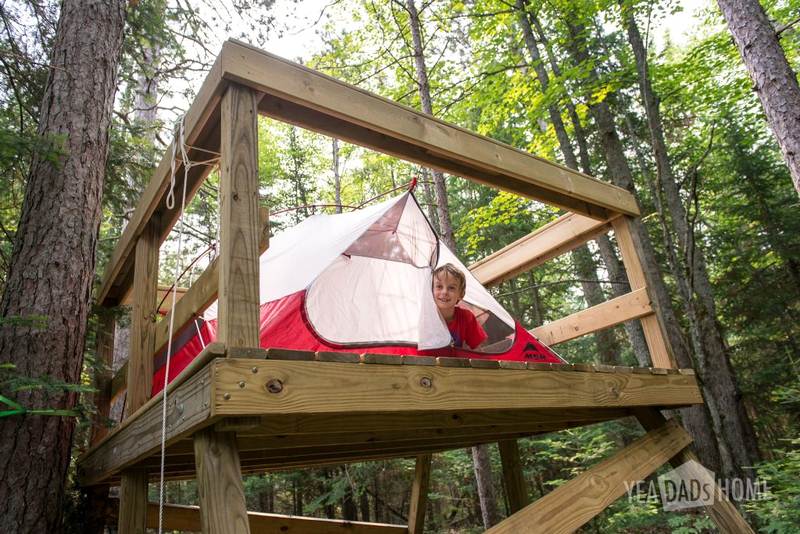
10. How To Build a Simple Tree House | Apartment Therapy
Steps-by-steps:
- Attach Foundation.
- Insert Cross Braces.
- Lay Deck.
- Add Extra Deck.
- Install the Staircase.
- Decorate.

11. The DIY Plans, Modern Tree House for Kids
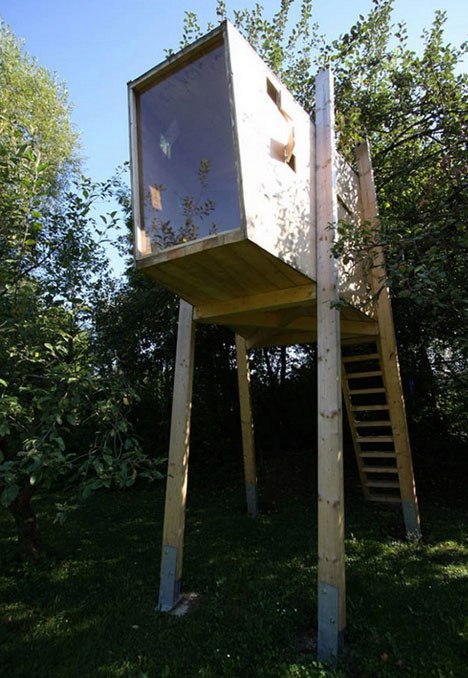
12. Off-Grid Tree House DIY Videos by Wranglerstar
37 videos Steps-by-steps on How to build a treehouse
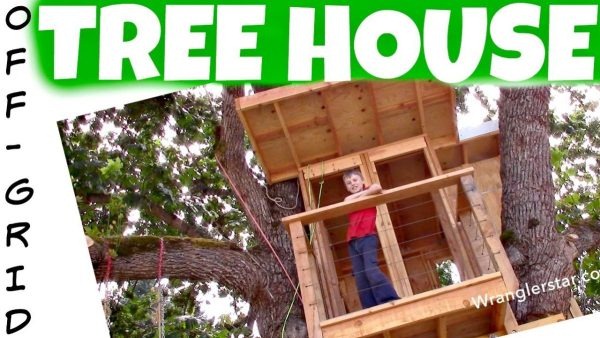
13. The Best Way to Build a Treehouse – Detailed Tree House Plans
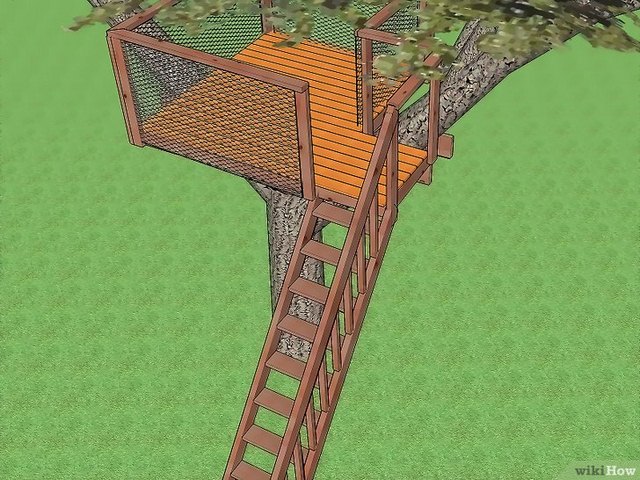
14. Simple Tree House DIY: Building Your Own Tree House By Charles Wesley Orton
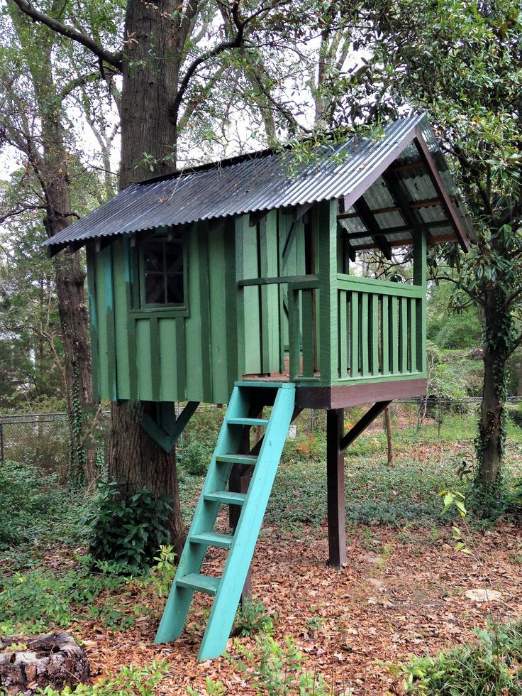
15. The Free Colorful Deluxe Tree House Plans
From free shed plans collection, this is easy to build set of treehouse plans. Make it easy with step by step guide. This is available for instant access from the site.

16. A Handmade Hideaway Treehouse Plans
A little something to cook up for the kids in your backyard.

17. Build Your DIY Tree Deck
Build Your Own Treehouse, tips and tricks and tools on how to built it {DIY}.
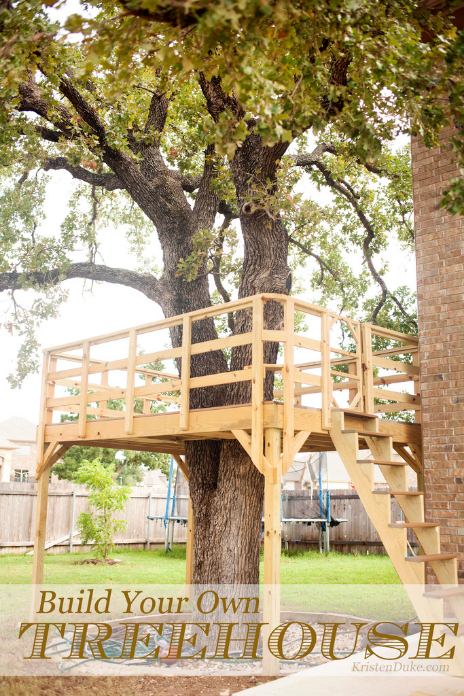
18. DIY Medium Size Treehouse with Pictures
Table of contents:
- Step 1: Installing the Beams.
- Step 2: Level the Platform.
- Step 3: Install the Knee Braces.
- Step 4: Install Decking.
- Step 5: Frame and Install the Walls.
- Step 6: Frame the Roof.
- Step 7: Add Access Ladder and Doors.
- Step 8: Install Railing.
- More details click on the button below image…
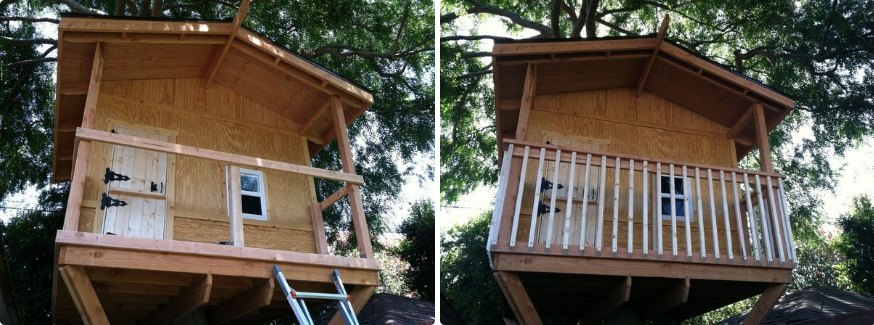
19. DIY Open Tree House: EZ Treehouse Plans by Fred Lundgren and John Gallagher
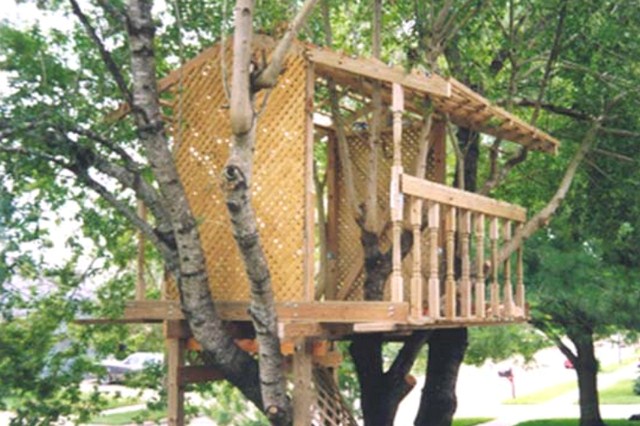
20. The 4 Steps DIY Tree Deck with Pictures
Steps-by-steps:
- Step 1: Build the Framework.
- Step 2: Spider Web Supports.
- Step 3: Railing of Copper Pipes and Salvaged BedPosts.
- Step 4: About 6 Months Well Spent.
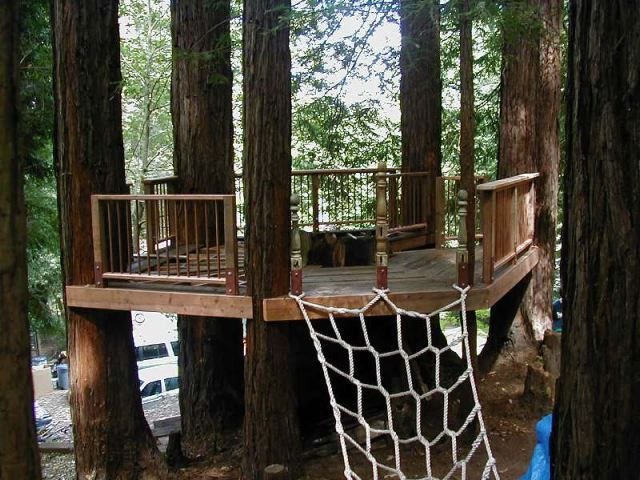
21. DIY Wood Sided Treehouse in the Backyard
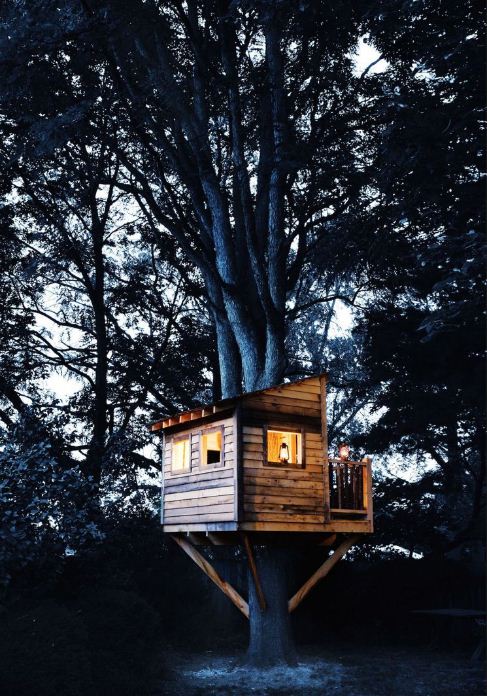
22. The Playset Tree House
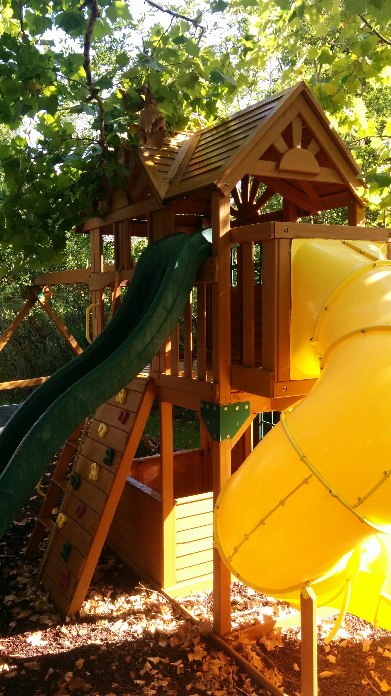
23. DIY Picket Tree Fort
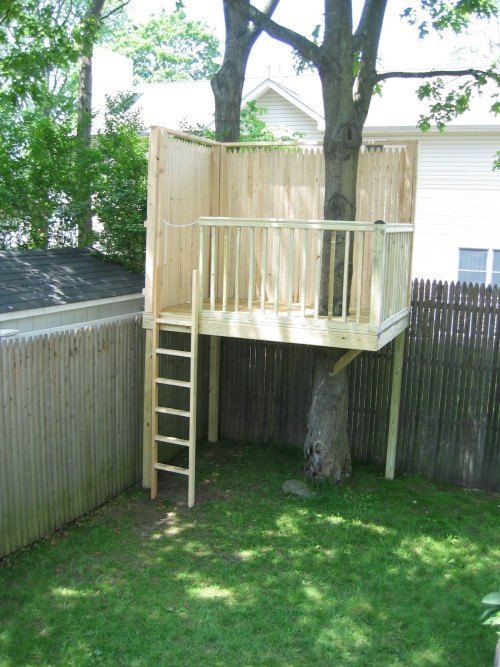
24. DIY A-Frame Tree House
This A-frame treehouse can be build using one 3 and 2 posts or using 4 posts for support. It’s constructed using four-by-eight plywood sheets. Shingling over the plywood is optional. For more details please click on the button below image…

25. The Tree Fort: How to Build a Treehouse by Makendo
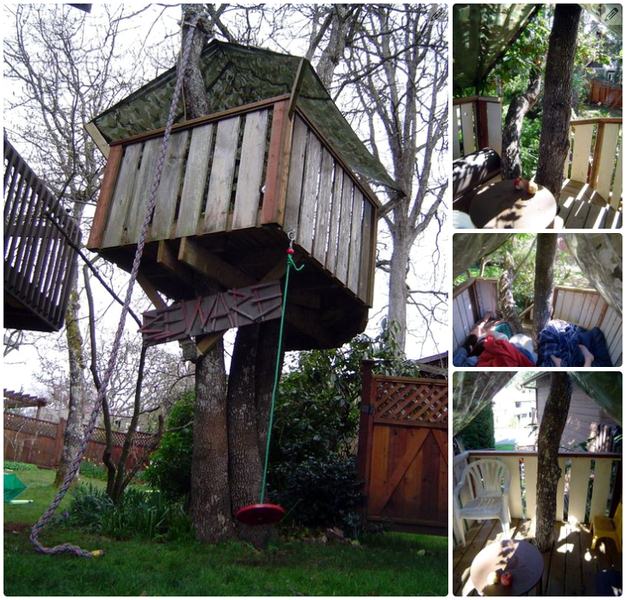
26. The Matching Ultimate Kid’s Treehouse
5 Steps with Pictures:
- Step 1: Dream and Plan.
- Step 2: Foundation and Framing.
- Step 3: Drying It In.
- Step 4: Interior Design.
- Step 5: Finishing Touches.
- More details click the button!

27. The 6 Phase to Build a Tree House
Table of contents:
- Phase One: Picking & Prepping the Trees
- Phase Two: The Base
- Phase Three: the Deck
- Phase Four: Framing the Sides
- Phase Five: Siding
- Phase Six: Details, details, details
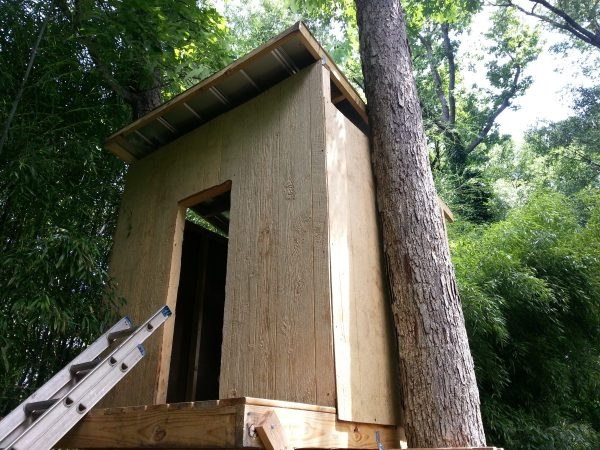
28. The Tree House With a Deck by ArborCasa
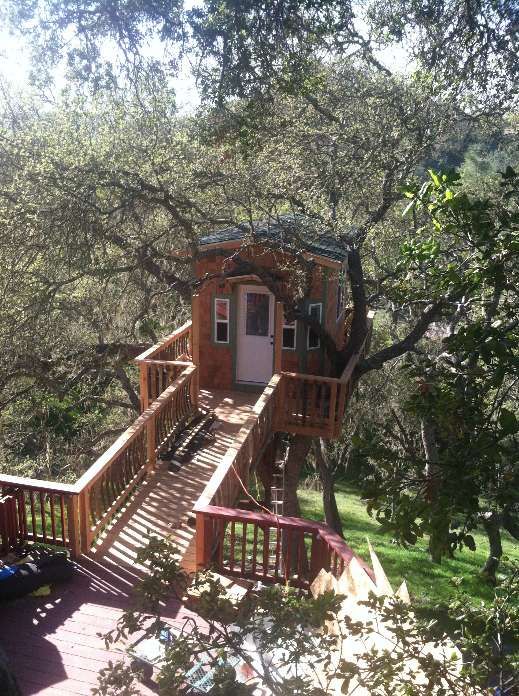
29. The Basic One Tree House
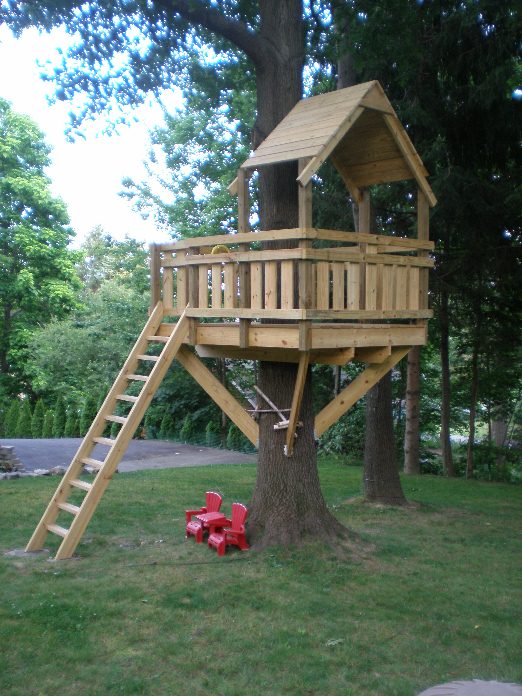
30. The Pirate Hideout Treehouse by johnkry19
9 Steps how to make a treehouse:
- Step 1: Build The First Board.
- Step 2: Build Support and Floor.
- Step 3: Building Frame.
- Step 4: Build the Walls.
- Step 5: Build the Door and Ladder.
- Step 6: Build the Roof.
- Step 7: Decorations.
- Step 8: Finish.
- Step 9: Time and Cost.
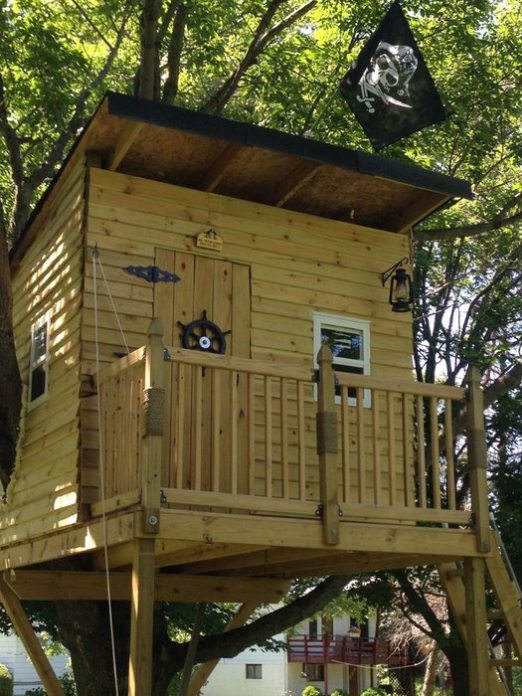
31. The Family Handyman Tree House Building Tips
DIY this Treehouse:
- Overview: The inspiration for tree houses.
- How to build a treehouse tip 1: Site considerations.
- Building Tip 2: Keep weight and stability in mind.
- Building Tip 3: Don’t Restrict Tree Growth.
- Building Tip 4: Level the floor.
- Building Tip 5: Build sections on the ground and hoist them into position.
- Building Tip 6: Use the right fasteners.
- Building Tip 7: Checklist of cool accessories (to buy or make).
- Building Tip 8: Beware of the dark side of tree houses.
- More details click the button below…
